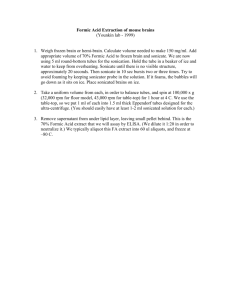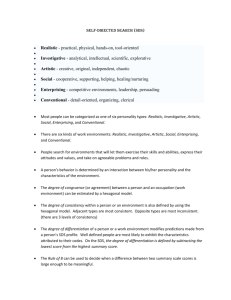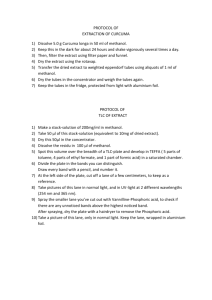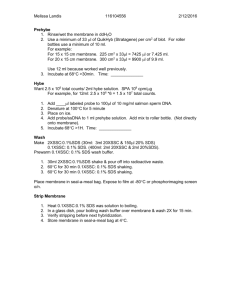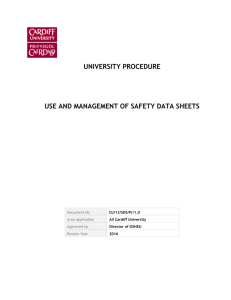Protocol for Formic Acid extraction of mouse brains (Younkin lab
advertisement
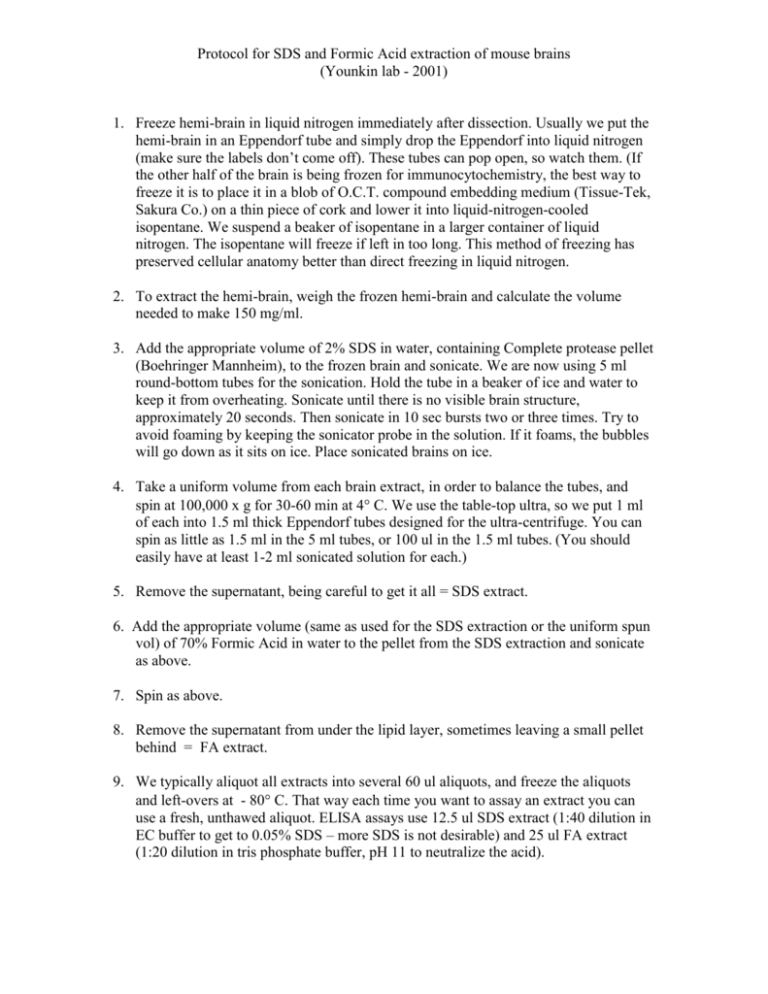
Protocol for SDS and Formic Acid extraction of mouse brains (Younkin lab - 2001) 1. Freeze hemi-brain in liquid nitrogen immediately after dissection. Usually we put the hemi-brain in an Eppendorf tube and simply drop the Eppendorf into liquid nitrogen (make sure the labels don’t come off). These tubes can pop open, so watch them. (If the other half of the brain is being frozen for immunocytochemistry, the best way to freeze it is to place it in a blob of O.C.T. compound embedding medium (Tissue-Tek, Sakura Co.) on a thin piece of cork and lower it into liquid-nitrogen-cooled isopentane. We suspend a beaker of isopentane in a larger container of liquid nitrogen. The isopentane will freeze if left in too long. This method of freezing has preserved cellular anatomy better than direct freezing in liquid nitrogen. 2. To extract the hemi-brain, weigh the frozen hemi-brain and calculate the volume needed to make 150 mg/ml. 3. Add the appropriate volume of 2% SDS in water, containing Complete protease pellet (Boehringer Mannheim), to the frozen brain and sonicate. We are now using 5 ml round-bottom tubes for the sonication. Hold the tube in a beaker of ice and water to keep it from overheating. Sonicate until there is no visible brain structure, approximately 20 seconds. Then sonicate in 10 sec bursts two or three times. Try to avoid foaming by keeping the sonicator probe in the solution. If it foams, the bubbles will go down as it sits on ice. Place sonicated brains on ice. 4. Take a uniform volume from each brain extract, in order to balance the tubes, and spin at 100,000 x g for 30-60 min at 4 C. We use the table-top ultra, so we put 1 ml of each into 1.5 ml thick Eppendorf tubes designed for the ultra-centrifuge. You can spin as little as 1.5 ml in the 5 ml tubes, or 100 ul in the 1.5 ml tubes. (You should easily have at least 1-2 ml sonicated solution for each.) 5. Remove the supernatant, being careful to get it all = SDS extract. 6. Add the appropriate volume (same as used for the SDS extraction or the uniform spun vol) of 70% Formic Acid in water to the pellet from the SDS extraction and sonicate as above. 7. Spin as above. 8. Remove the supernatant from under the lipid layer, sometimes leaving a small pellet behind = FA extract. 9. We typically aliquot all extracts into several 60 ul aliquots, and freeze the aliquots and left-overs at - 80 C. That way each time you want to assay an extract you can use a fresh, unthawed aliquot. ELISA assays use 12.5 ul SDS extract (1:40 dilution in EC buffer to get to 0.05% SDS – more SDS is not desirable) and 25 ul FA extract (1:20 dilution in tris phosphate buffer, pH 11 to neutralize the acid).

